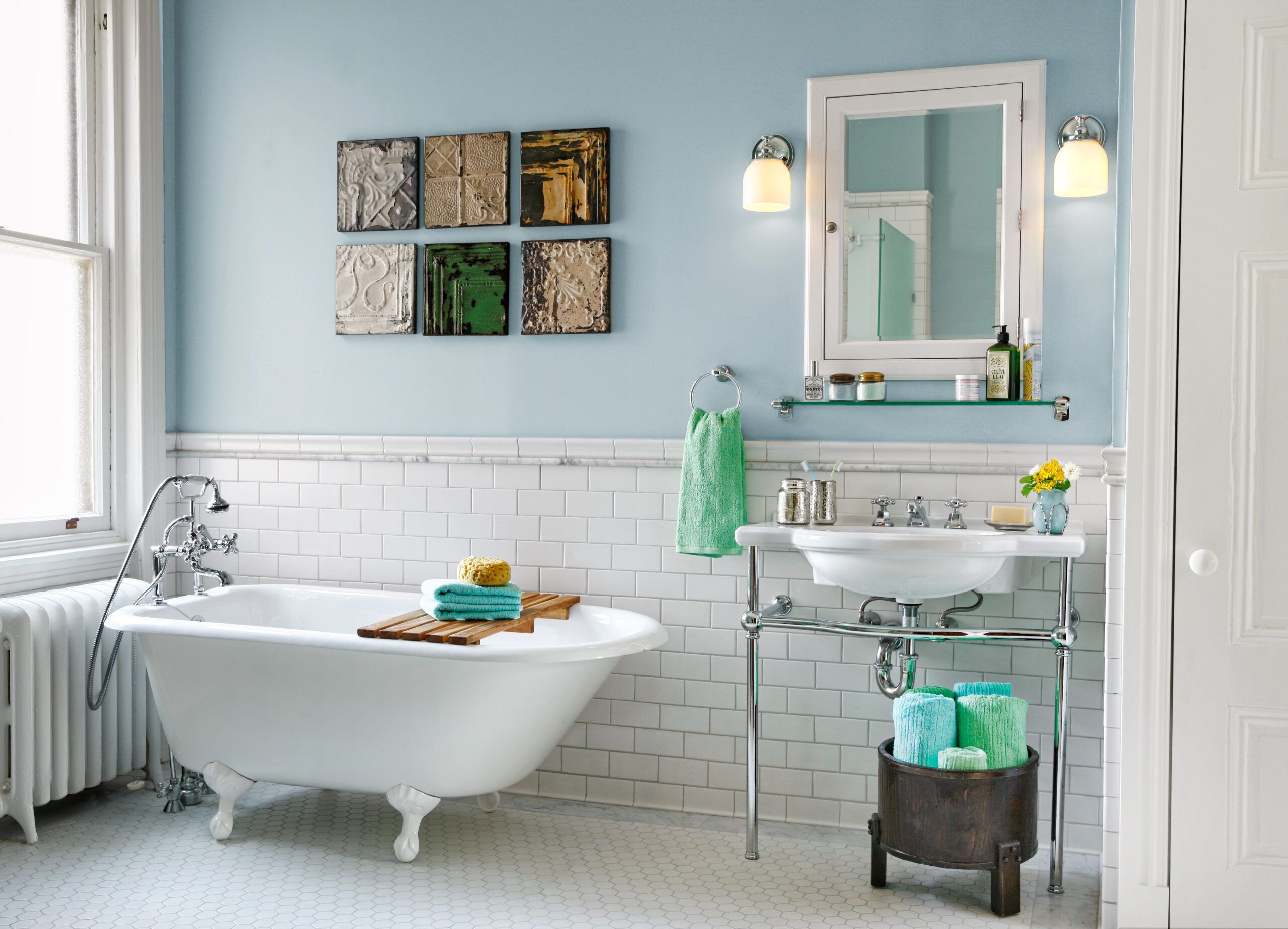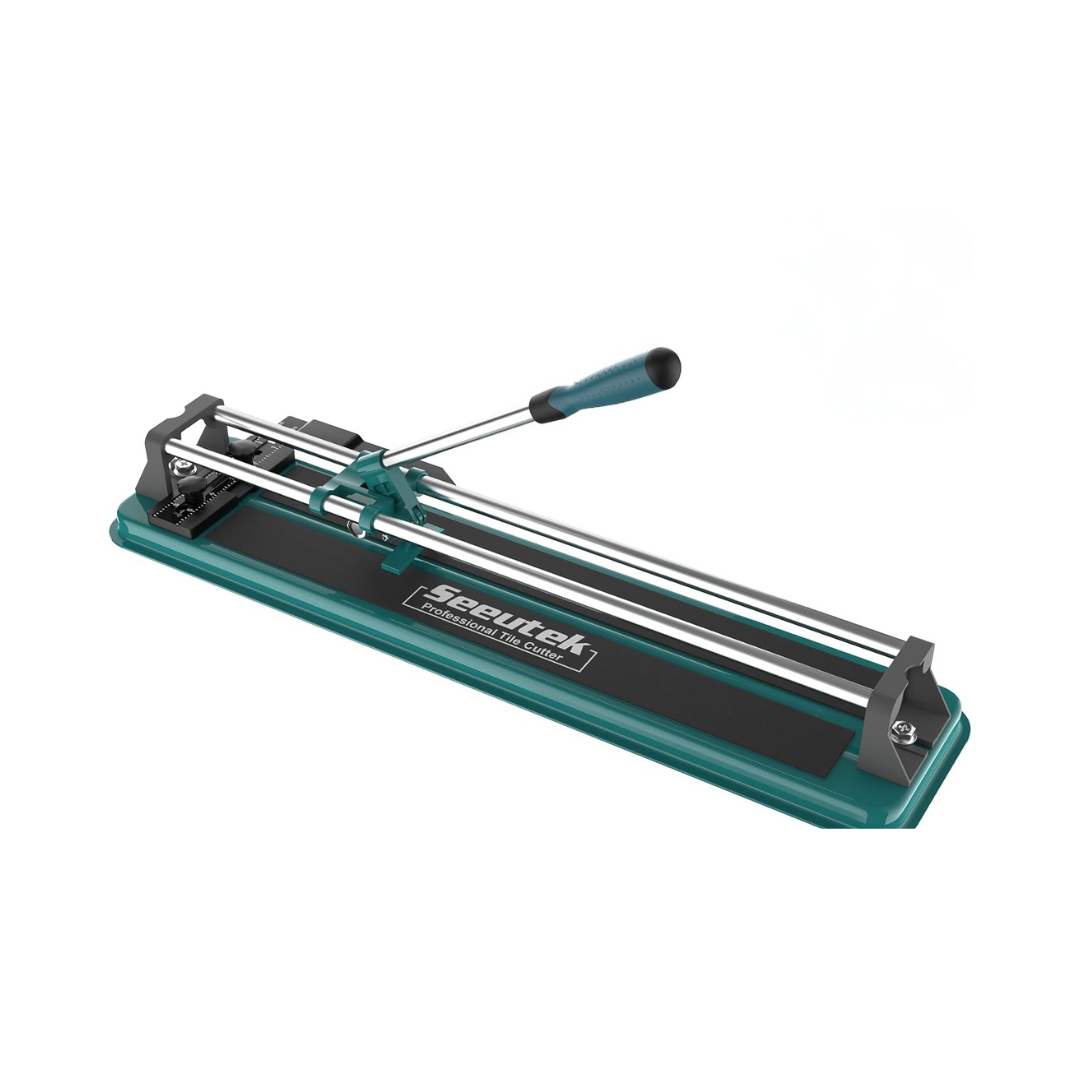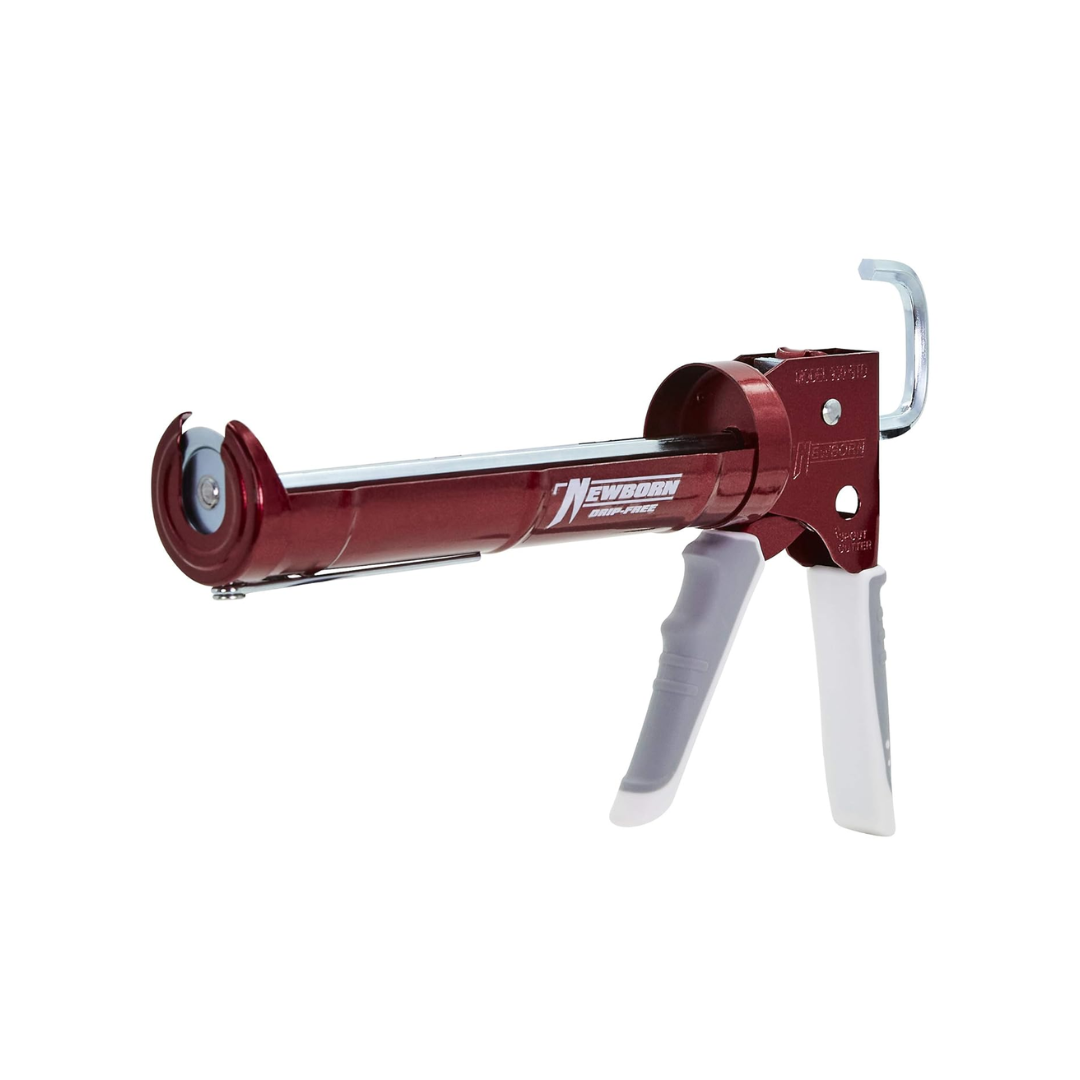We may be compensated if you purchase through links on our website. Our team is committed to delivering honest, objective, and independent reviews on home products and services.
Project details
Skill
Cost
Estimated Time
Tile is a good choice for bathroom walls because it’s resistant to water and stains, easy to clean, and available in dozens of colors, sizes, and styles. With the right tools and materials—and the patience to lay out the tiles properly—you can easily tile a tub surround yourself. Our guide covers step-by-step instructions and other considerations.
Tub Surround and Tile Options
Different tub surround types are available for different bathroom layouts. Here are a few of the most common ones:
- Alcove surrounds: Alcove surrounds are designed for tubs set into an alcove with three walls.
- Corner surrounds: These surrounds typically cover two walls and are ideal for tubs placed in a corner.
- Three-wall surrounds: These cover the back wall and two side walls.
You’ll also need to consider what tile material would be best for your project. Here are a few popular options include:
- Ceramic tiles: Ceramic is affordable, durable, and available in various colors and patterns.
- Glass tiles: Glass is sleek and offers a unique, modern design.
- Natural stone tiles: Luxurious options like marble or travertine aren’t cheap, but they can give your bathroom a high-end look.
- Porcelain tiles: Porcelain is more water-resistant than ceramic, making it ideal for wet areas.
Preparing the Tub Surround for Tiling
The first and most important step for tiling bathroom walls is to start with a clean, stable, and water-resistant underlying layer like backer board. Cut the backer board to fit your tub surround, leaving a 1/4-inch gap at the bottom to prevent water wicking. Once you’ve installed the board, fill the seams with thinset mortar and embed fiberglass-mesh joint tape for a secure bond.
Next, apply a waterproofing membrane over the backer board to create a moisture barrier and reduce the risk of water damage. Follow the manufacturer’s instructions for application and drying time.
In the video below, Kevin O’Connor and Tom Silva explain how to prepare a bathroom for tile.
The Anatomy of a Tub Surround
Familiarize yourself with the parts of a tub surround before starting your installation.
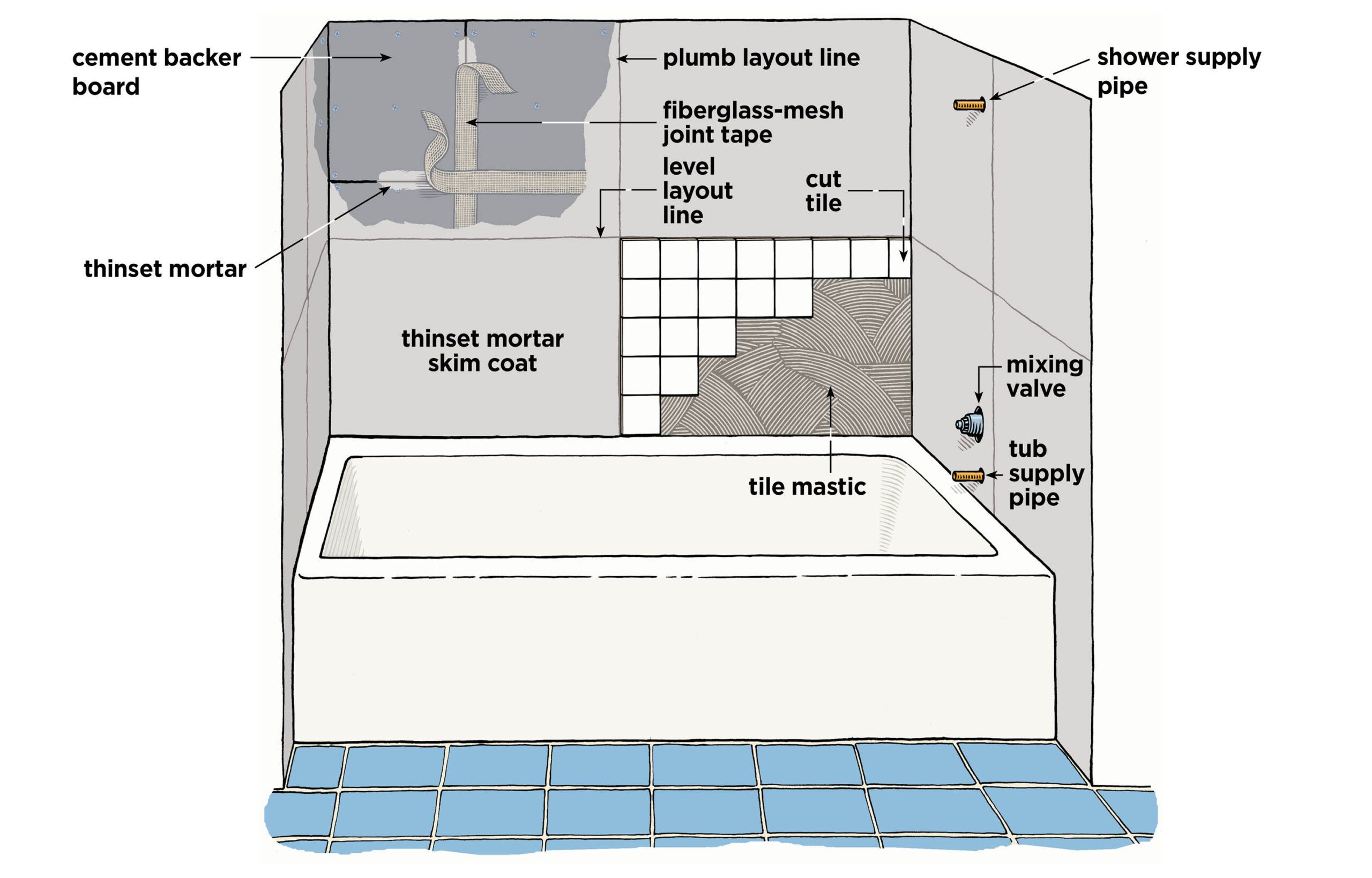
Planning Your Tile Layout of a Tub Surround
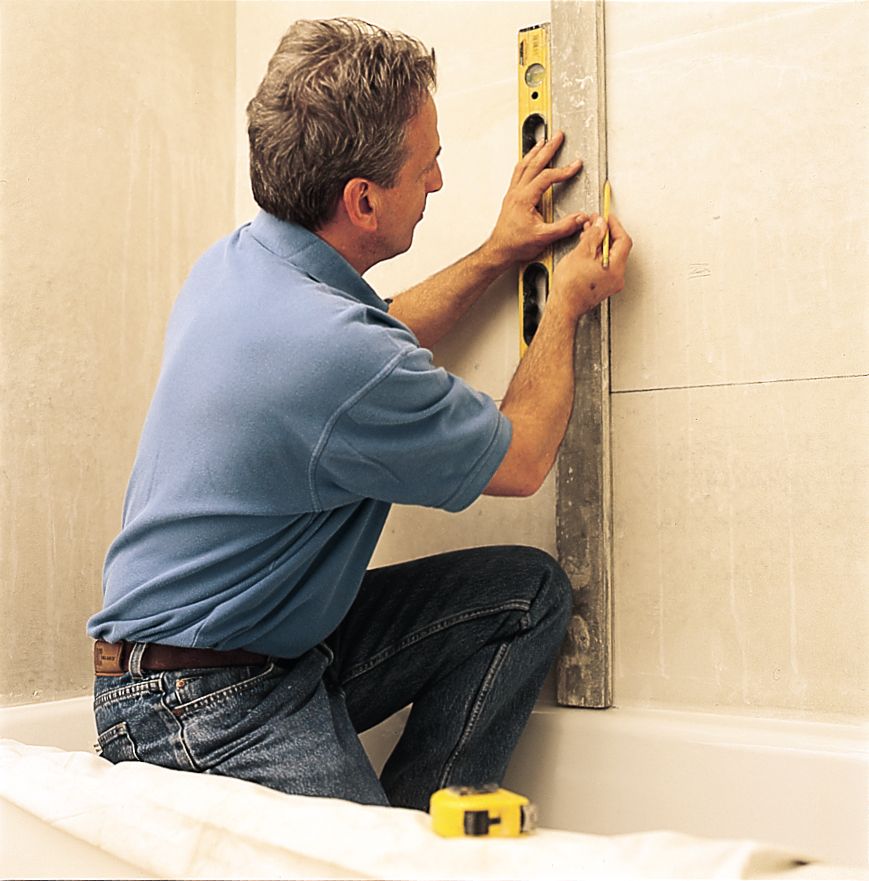
A well-planned layout is essential for a professional-looking tub surround. Taking time to measure and plan will help you avoid awkward cuts and ensure a balanced appearance.
Start by measuring the height of the back wall from the lip of the tub to the top of the tiling area. Make a mark at the midway point.
Then, check your measurement. Calculate how many tiles it takes to reach from the center mark down to the tub. If you end up with less than half a tile at the tub, adjust the mark downward by the height of this tile fragment so you end up with a full tile at the bottom and a larger cut tile at the top.
Measure the back wall’s horizontal width once you have your vertical mark set. Draw a plumb line down the center of the wall and mark the midpoint. If this leaves tile slivers on both sides, adjust the line right or left as necessary.
Calculating How Much Tile to Buy
To find out how many tiles you’ll need, calculate your tub surround’s square footage, then add a little extra for waste and cuts. Your design should also account for any decorative tiles or borders.
As you take and verify measurements, note any fixtures or obstructions in the way. You may need to make special cuts to fit around them later.
Setting the Tiles
Once you’ve figured out your tub surround’s layout, it’s time to start setting tiles. This process requires patience and precision for a professional-looking result.
Applying the Mastic
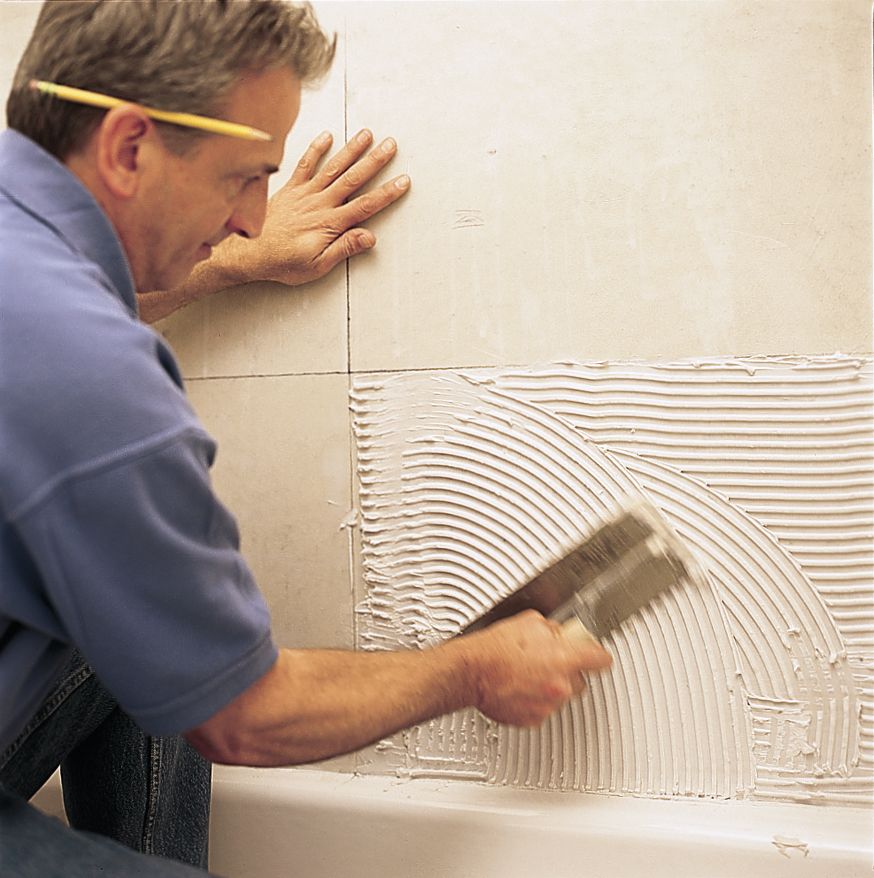
For tub surrounds, This Old House tile contractor Joe Ferrante recommends choosing latex tile mastic over thin-set mortar. Mastic is much stickier than mortar, so you won’t have to worry about the tiles sliding down the wall.
To apply the mastic, use the smooth edge of a trowel to spread a thick layer of mastic onto one quadrant of the wall. Since the mastic has a working window of about 20 minutes, it’s best to only apply it to 2 or 3 square feet at a time.
Once you have a smooth layer, use the trowel’s notched edge to rake out the mastic and make a series of deep ridges.
Tip: If the mastic starts to lose its tackiness, or “skin over,” scrape the wall clean and apply fresh mastic.
Setting Full Tiles
Set the first tile where your two layout lines intersect. Press the tile tight to the wall, and ensure its edges are flush with the horizontal and vertical lines. Keep setting full tiles along the lines in both directions, working out toward the end wall and down to the tub in a stepped pattern.
While many tiles have nubs to keep them evenly spaced for grout, some aren’t. If your tiles don’t have nubs, use plastic spacers to maintain consistent grout lines.
Cutting Tiles
You may need to cut tiles to fit around corners, fixtures, and at the edges of the surround. Here’s how to do it.
Tip: Make sure to leave space for caulk between the bottom course of the tile and the tub.
Marking and Making the Cuts
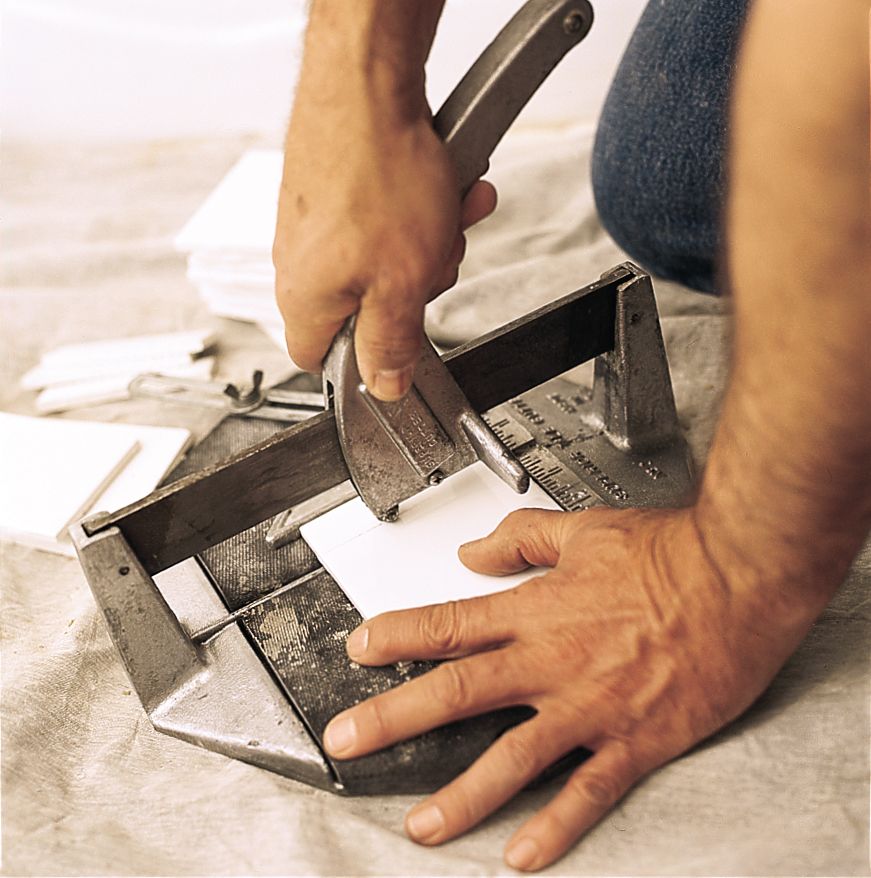
First, plan the cut. Hold a full tile in place and mark where it overlaps the last full tile already on the wall. Check and double-check your measurements before you proceed.
Place the tile on the tile cutter so the mark lines up with the wheel. Slide the adjustable fence against the tile’s edge to make cutting the remaining tiles easier.
With slight downward pressure, pull the cutting wheel across the tile face to score the glaze. Don’t score the tile twice. Press down on the handle to snap the tile and complete the cut.
Making Notches and Holes for Fixtures
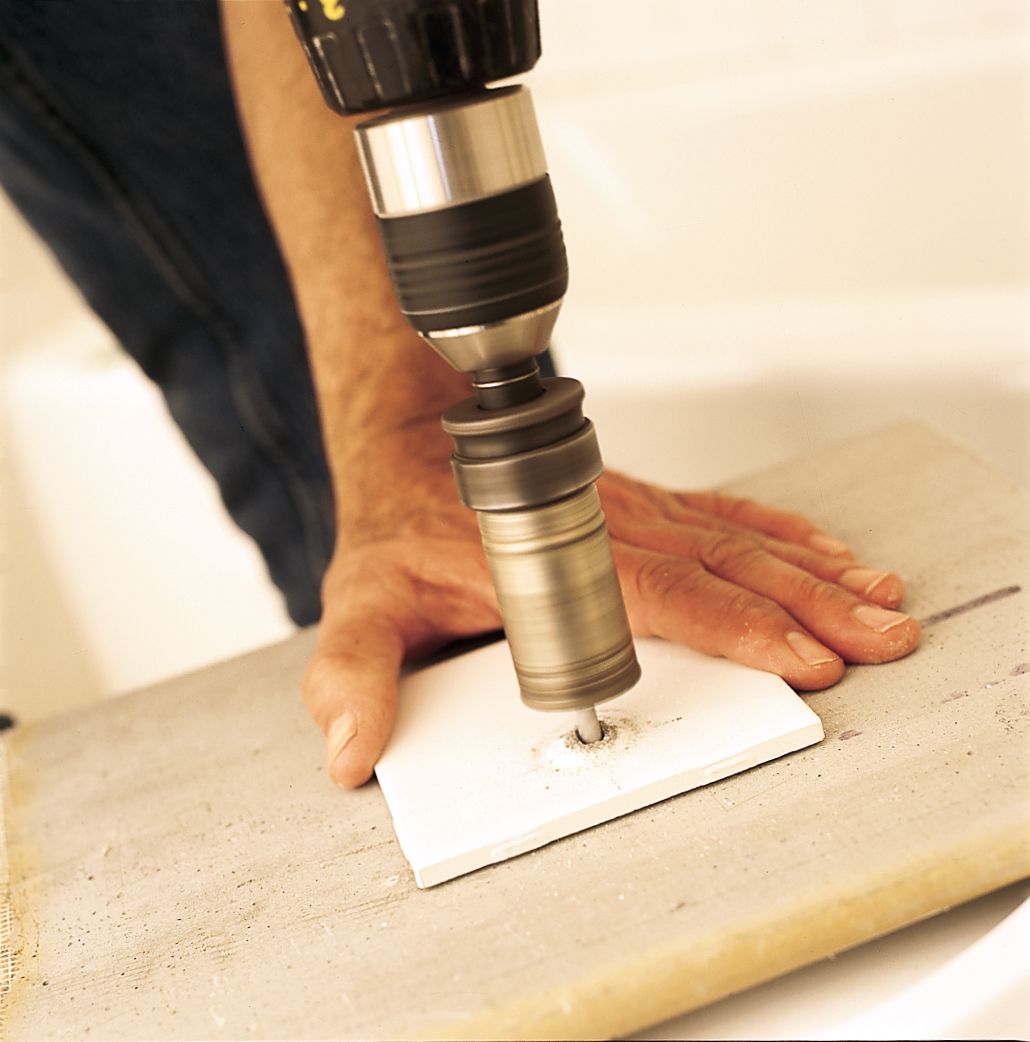
Use a diamond-grit hole saw to drill holes for pipes and valve bodies in a single tile. If cuts are more complex, you can use tile nippers to carefully create notches that can fit around rough plumbing.
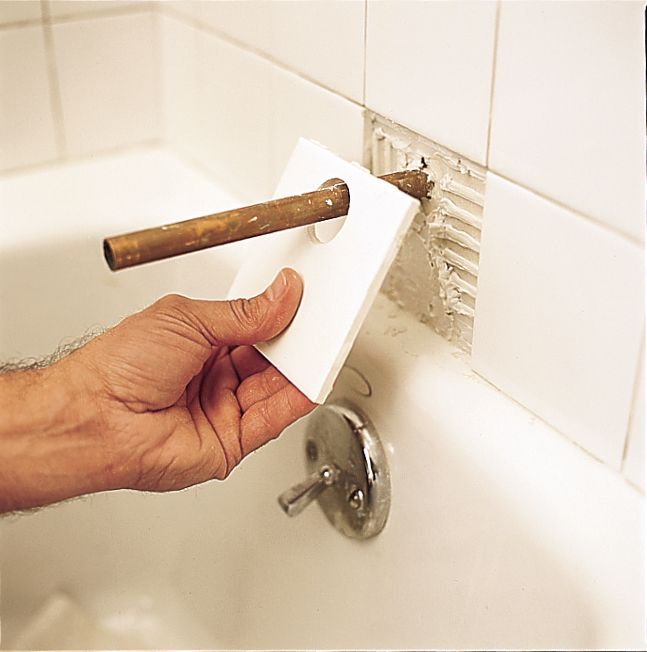
Setting Cut Tiles
Set cut tiles with the cut edge against corners or ceilings. For a professional finish, use bullnose tiles along the tub surround’s exposed edges.
Grouting and Finishing Touches
You’re almost done. After allowing the adhesive to cure overnight, you can proceed with grouting to give your tub surround a finished look and fight moisture infiltration.
Choose a grout that complements your tile color and is appropriate for the width of your lines. For most bathrooms, a fortified unsanded tile grout is suitable.
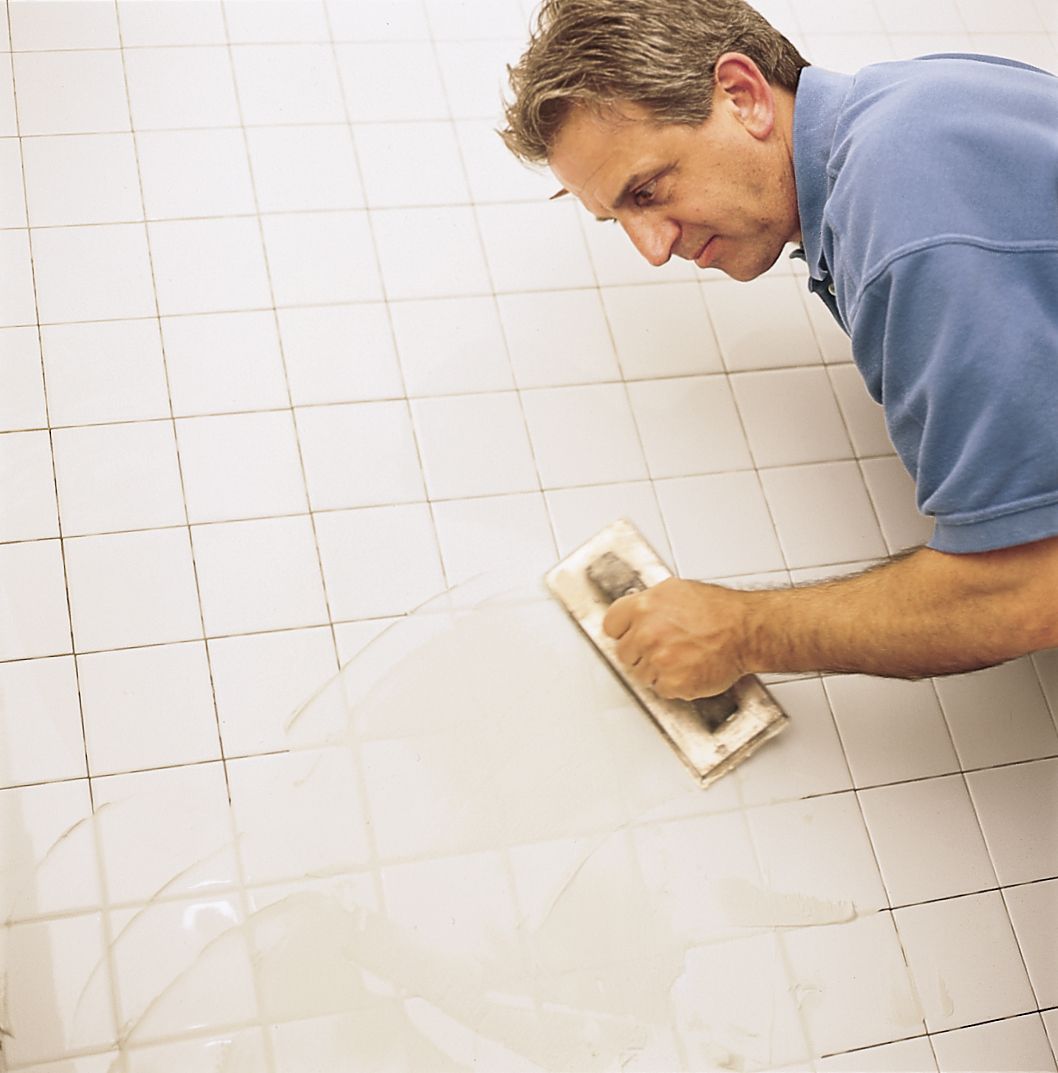
Applying and Cleaning Grout
Pour a quart of your grout into a bucket. Mix in just enough water or latex additive to create a mayonnaise-like consistency. Use a rubber float to spread grout diagonally across the tiled surface, forcing it into every joint. Let it cure for 15–20 minutes, then clean excess grout off with a damp sponge.
The next day, buff the remaining grout haze off the tiles with a clean and dry cloth.
Sealing Grout Lines
Once the grout has fully cured (typically 48–72 hours), apply a grout sealer to protect against moisture and staining. Use a siliconized acrylic caulk that matches your grout color to fill the joint between the tub and the first course of tile.
